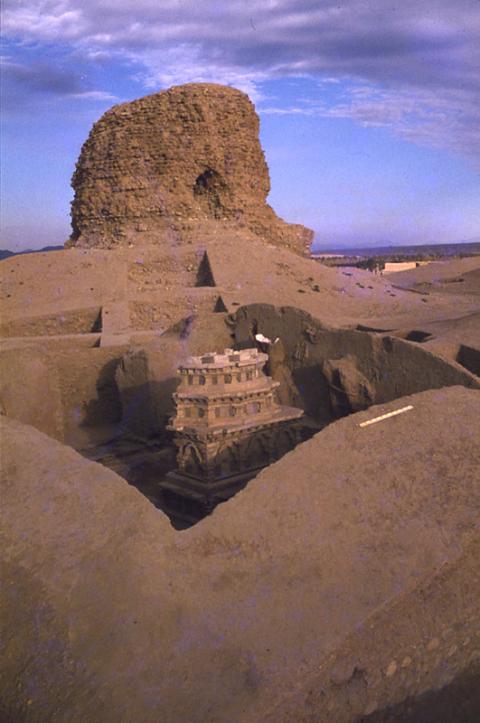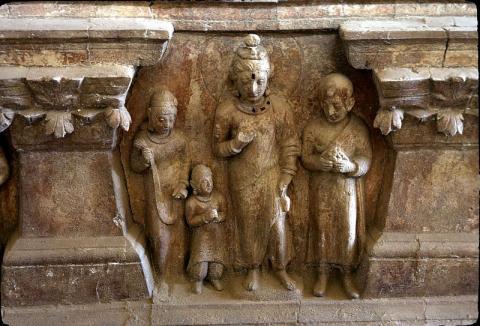Hadda, a small town 15 km south of Jalalabad (Eastern Afghanistan), owes its fame to the number and beauty of the remains of its Buddhist stūpas, shrines and monasteries scattered over an area of 15 km2 around the urban settlement.
Throughout the period of Buddhism’s great flourishing, from the Kushans (1st–3rd century CE) into the 7th century CE, Hadda was a popular pilgrimage destination where, according to the accounts of famous Chinese pilgrims such as Faxian and Xuanzang, various relics of the Buddha’s body and belongings were preserved, each of them enshrined in a stūpa: a bone of the Buddha’s skull and uṣṇīṣa (cranial protuberance), an eyeball, the monastic robe and the ascetic staff.
Exploration of the site began in 1834 with Charles Masson, who discovered Graeco-Bactrian, Indo-Scythian, Hunnic, Roman and Byzantine coins inside 14 stūpas in different sacred areas. The most important of these, Tapa Kalan (Fig. C), also yielded fragments of stone and stucco sculptures. Further minor investigations followed, until J. Barthoux of the Délégation Archéologique Française en Afghanistan (DAFA) carried out extensive excavations on various sites from 1926 to 1929.
While the stone sculptures passed almost unnoticed and were much later and only partly published, the stucco and clay sculptures – yielded at all the sites in great number – made Hadda famous all over the world. Their astonishing beauty and liveliness, originally enhanced by a vibrant color, which has only minimally been preserved, and especially their Hellenistic touch aroused great interest.
Between the mid-1960s and the end of the 1970s other sites were excavated by Afghan and Japanese teams. Tapa Shotor (Fig. D), one of the most interesting sites to be excavated during this period, revealed shrines housing cultic images and scenes characterized by the theatrical arrangement of the sculptures and their lively background (2nd–5th century CE) as well as an underground room, probably restricted to the monks’ meditation practices, as suggested by the painted decoration (5th–6th century CE) dedicated to the theme of meditation on death.
In the course of the Afghan civil war, the majority of known archaeological sites was destroyed by the Taliban. .


